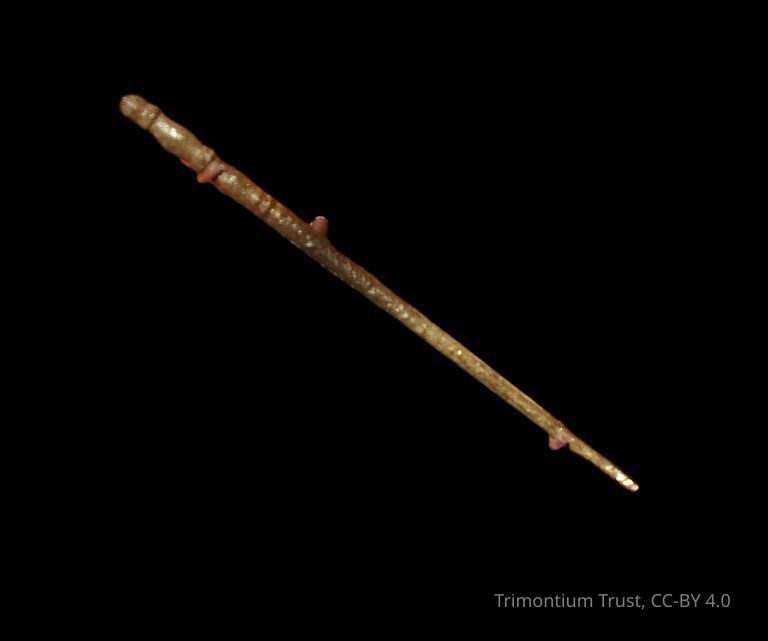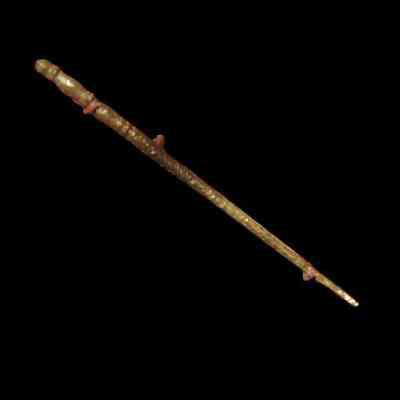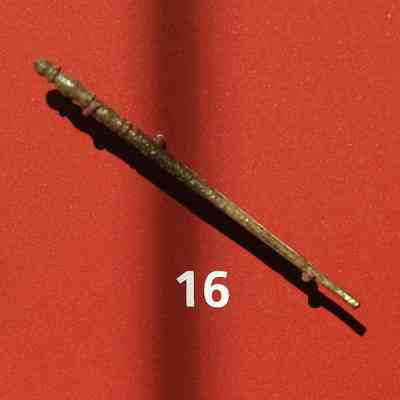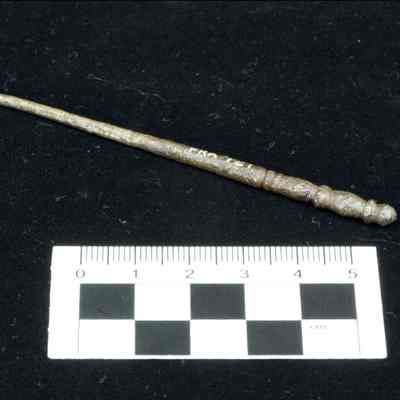Pin
Name/Title
PinEntry/Object ID
L.2021.106Description
Pin of bronze with baluster head and mouldings on its upper part, from the Roman site at Newstead, Roxburghshire, 80-180 ADUse
Accessory likely used to tie back and style hair or to fasten clothing. Roman pins were used primarily for hair and dress. They are found in a wide variety of materials. They often feature some type of decoration ranging from simple designs to having highly decorative heads.Context
One of several pins found during James Curle's excavations. Found near the Baths at Trimontium.Collection
National Museums ScotlandCategory
Pin
Jewellery
Acquisition
Accession
X.FRA 721Source (if not Accessioned)
National Museums ScotlandNotes
LoanMade/Created
Time Period
1st - 2nd centuryEthnography
Cultural Region
Continent
EuropeCulture/Tribe
Romano British



